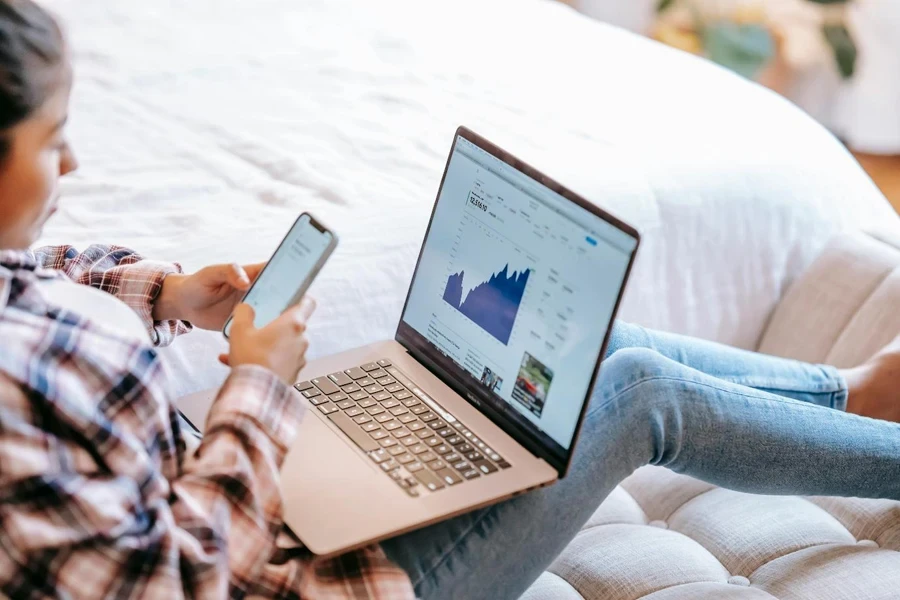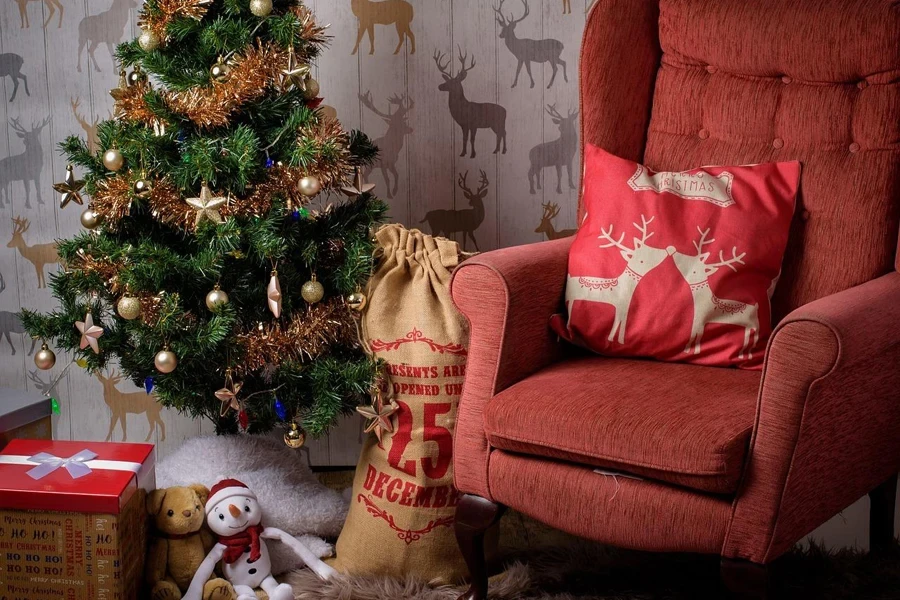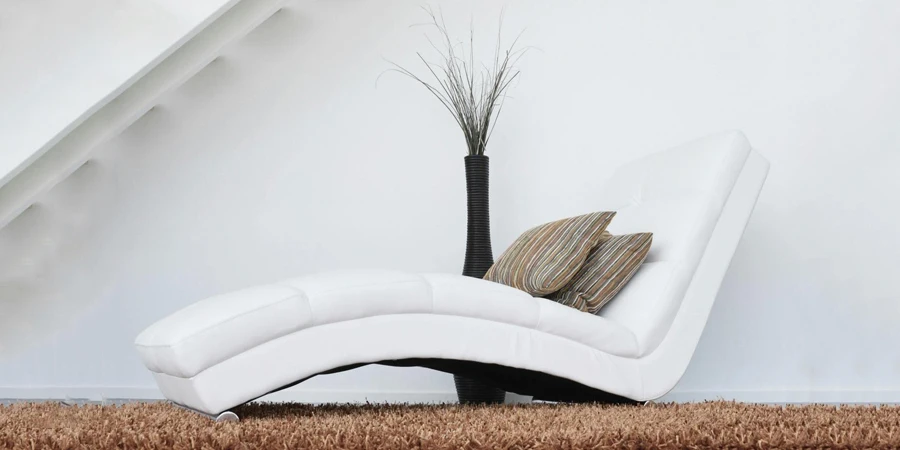Table of Contents
● Introduction
● Market overview
● Different types and their features
● Things to consider when selecting products
● Conclusion
Introduction

Supportive lumbar pillows and seat cushions promote healthy posture and relieve back discomfort; they are highly valued in work settings and homes due to their benefits for our well-being. The demand for these comfort essentials is rapidly growing due to our sedentary lifestyles and prolonged use of electronic devices. With many options in terms of design and materials in the market today, finding the fit can greatly improve your overall comfort and back support. Awareness of market trends, available product features, and important factors to consider when selecting these items is key to making well-informed choices. This article explores the market conditions and offers guidance on choosing the right lumbar cushions and chair pads.
Market overview

Market scale and growth
The worldwide market for lumbar support cushions is worth $3.12 billion based on estimates for 2024. It is expected to hit $5.04 billion by 2033, with a CAGR of 4.9 % over the forecast period. This rise is fueled by the growing prevalence of lifestyles and extended hours of screen use, which has boosted the need for goods that offer improved comfort and assistance.
According to the latest information available, lumbar back support pillows were the top-performing segment in the market, capturing a significant share of 42.8%. In particular, memory foam back support pillows stood out with a 40.5% market share. Looking at regions, North America emerged as the leader with a market share of 42·1%, which could be attributed to the widespread presence of desk jobs and an increasing focus on maintaining good posture for overall health benefits. Factors influencing the market include increased back pain cases, the demand for ergonomic solutions at home and work environments, and top companies’ launch of new and creative products.
Different types and their features

Orthopedic and cervical pillows
Orthopedic and neck pillows are created to help the neck’s curvature by maintaining its shape. They typically have a shaped design with a hollow for the head and raised sections to support the neck. Foam and latex are used in these pillows as they can mold to fit the shape of the head and neck, providing solid and cozy support. For example, memory foam pillows often come in densities of 3 to 5 pounds per cubic foot, striving for an equilibrium between support and comfort. The ergonomic layout aids in alleviating strain on areas. It enhances posture alignment. This is a plus for those dealing with neck problems.
Body pillows
Body pillows offer support for the head, neck, and legs, especially for people who sleep on their side and expectant mothers. These pillows vary in size from 48 to 54 inches. They are usually filled with shredded memory foam or polyester fiberfill. There are also body pillows shaped like the letters J and U that support the head and legs to help keep the spine aligned properly. Some body pillows have filling options that enable users to adjust the firmness and loft based on their liking. Body pillows can relieve pressure from the hips and shoulders while enhancing sleep posture for rest.
Specialty pillows
Wedge pillows
These triangular pillows can be used to raise either the body or legs and are usually about 24 inches long, with an incline ranging from 30 to 45 degrees. This feature may aid in alleviating back discomfort and enhancing blood flow circulation.
Travel pillows
These pillows are typically shaped like a U to provide neck support while traveling and prevent it from bending. They are commonly filled with memory foam or microbeads. Designed to be compact for easy portability.
Coccyx cushions
These seat cushions have a design that helps reduce pressure on the tailbone area when seated for long periods. They are typically crafted from memory foam with a density rating ranging from 4 to 6 pounds per cubic foot to offer a good balance of support and comfort. Lumbar support pillows are designed to bridge the gap between the back and the chair to encourage better posture while sitting for extended periods.
Material analysis
Memory foam
Memory foam pillows offer support by molding to the contours of the body’s natural shape. They typically weigh between 3 and 5 pounds per foot, effectively distributing weight evenly and alleviating pressure points. However, some may find them less suitable as they tend to trap heat, making them less ideal if you prefer a cooler sleeping environment.
Gel cushions
Gel cushions are designed with a layer of gel on a foam base. It helps relieve pressure and regulate temperature effectively. By allowing body heat to disperse easily, the gel ensures a comfortable and cooler sleep.
Fiberfill cushions
Polyester fiber is commonly used to fill fiberfill cushions because it is lightweight and retains shape over time. These cushions are simple to clean and hypoallergenic; however, they typically provide more support than foam or gel cushions.
Inflatable cushions
Inflatable pillows are easy to carry around. It can be adjusted to provide the perfect amount of comfort for users. They usually include air compartments constructed from PVC or TPU materials. These pillows can be inflated to the desired level of firmness. It requires manual inflation and may not offer as much stability as other options.
Things to consider when selecting products

Material and durability
Selecting the materials is essential to ensure that lumbar pillows and seat cushions last long and perform well. Memory foam stands out with its viscoelastic properties and density ranging from 3 to 5 pounds per cubic foot; it offers customized support by molding to the body shape. High-density memory foam delivers support and can typically endure up to five years when cared for properly. Latex pillows are renowned for their natural resilience and firmness; they are resistant to dust mites and mold, which helps them maintain their quality for approximately seven years. Memory foam infused with cooling gel incorporates gel beads or layers to improve heat dissipation while retaining its qualities. Fiberfill cushions made of polyester fibers are light and hypoallergenic but are typically less supportive and long-lasting; they may need replacing every one to two years. Inflatable cushions crafted from high-strength PVC or TPU materials provide firmness but necessitate careful handling to prevent punctures and leaks that could affect their long-term functionality.
Usage and personal needs
Choosing the pillow for different needs is key to ensuring comfort and support tailored to specific requirements. A designed orthopedic pillow can benefit people with neck issues by offering precise support to maintain correct spinal alignment. For mothers U, U-shaped or J-shaped full-body pillows can provide overall support to relieve pressure from the back and belly. Meanwhile, lumbar support pillows are crucial for individuals leading a lifestyle as they help bridge the gap between the lower spine and chairs or seats, promoting good posture and reducing strain in the lower back area. Users can adjust the support level of their pillow to suit their preferences by utilizing features like removable inserts or customizable filling in ergonomic designs. This customization enhances comfort and minimizes the chances of discomfort or injury from extended use.
Cost and maintenance
Considerations regarding affordability and upkeep play a big role when choosing pillows. High-quality memory foam and latex pillows may have an upfront cost; however, they offer lasting comfort and resilience, making them a smart investment for the long haul. Memory foam pillows incorporating gel infusions necessitate spot cleaning and airing to uphold their shape and cleanliness. On the other hand, latex pillows commonly feature washable covers that can be easily removed for cleaning purposes. This not only simplifies maintenance but also prolongs their longevity. Low-cost fiberfill cushions might require cleaning and are prone to losing shape and support faster over time than inflatable cushions that need regular checks for air retention and punctures to maintain consistent support levels. Evaluating costs and benefits for each type of material involves not only the upfront cost but also the maintenance frequency and ease of upkeep, which impact the overall worth and functionality of the product.
Conclusion

Choosing lower back pillows and chair cushions is essential for enhancing posture and comfort levels to boost overall wellness in personal and work environments. Understanding the kinds of products available and individual requirements allows companies to guarantee that their customers or staff receive the best possible assistance and ergonomic options for improved health and efficiency.




